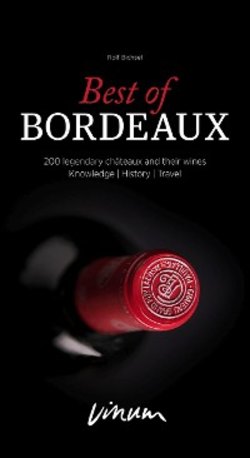Читать книгу Best of Bordeaux - Rolf Bichsel - Страница 38
Оглавление38
History Global trade
The power of the brand
Between 1700 and 1870, Bordeaux was synonymous with great, elegant red
wines and also a new colour (Bordeaux red), all of which quickly conquered the
world. Dry white wine also continued to be produced, but in the 19th century
in particular had to give ground to the production of exclusive sweet wines en-
joyed by more than just female foodies. This utterly blissful period – when the
vineyards of the Gironde were literally bursting at the seams and in addition to
the true top terroirs also occupied soils that would have been better used for
growing corn – was brought to a terrible end by the phylloxera crisis, stock mar-
ket crash and two world wars. This was a long drawn-out tragedy, as the region
constantly fought back but was ultimately forced to surrender. By the late 1940s,
Grand Crus existed only in memory in many areas. The Bordeaux wine as we
know it today is not centuries old, but is in fact now only barely reaching retire-
ment age. Bordeaux's return to its current lofty heights began around the turn of
the millennium, with the enthusiastic adoption of new technology which in the
best cases works hand-in-hand with age-old experience, and observance of the
golden rule that if you want to stay healthy and keep chalking up profits then
you have to master the art of selling your products, which requires international
distribution along a well-oiled, seamless chain stretching from the owner or a
director of an estate, who is responsible for the wine's quality and typicity (i.e. its
recognition factor), via merchants and wholesalers to general agents in distant
lands. This is how it works in Bordeaux: producers make wine from a selected
terroir using specially adapted grape varieties, which when blended ensure a
very particular style whose key characteristics are body, density and tannins
which develop as time passes. This style is elevated to the position of a system
and a brand which insists on its uniqueness. The producers cannot keep all the
profit for themselves, as A) they would be the only people willing and able to
brag about its uniqueness and B) they would be unable to a
ff
ord a global dis-
tribution network which is expensive to maintain, multiplies production costs
and forces the profit curve into a downward trend. So they have twenty, thirty
or fifty merchants on hand who must all sing the same tune for advertising and
distribution purposes. In return, they must be paid, which is no problem at all as
they simply increase the purchase price.
As investment in a brand is only worthwhile if it is spread out consistently
over a long period of time, clever merchants corner the market on certain wines
(those viewed as the most legendary, most expensive or most sought-after) be-
fore harvesting has even finished. This is what is now called ‘vente en primeur',
presented with great fanfare in the spring after the harvest. It involves purchase
via subscription, previously called ‘vente sur souche' or ‘option' and simply
means hogging the wines before they have even been bottled. This brings a
third partner into play, namely the broker or courtier, acting as a link between
